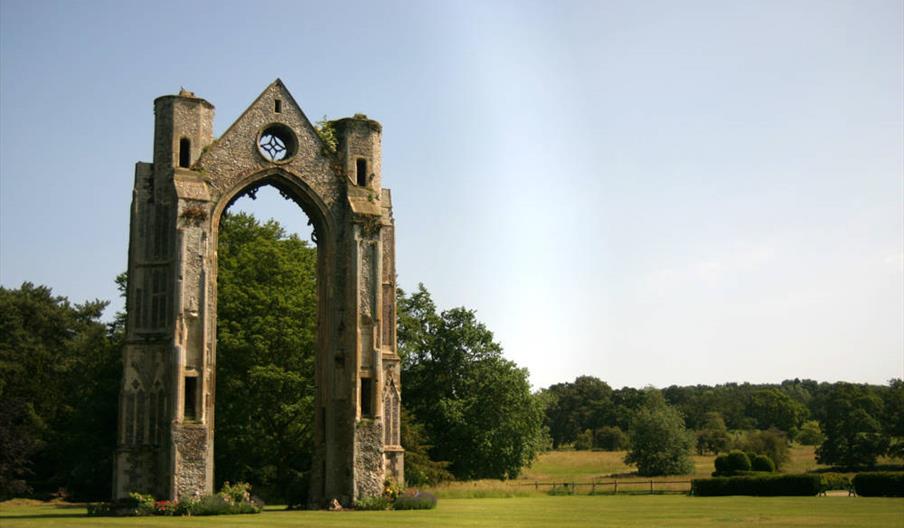Book Tickets Online
About
Welcome to Walsingham Abbey, where the grounds surrounding the historic house are famous for the spectacular ruins of the mediaeval Priory of our Lady of Walsingham, as well as miraculous swathes of naturalised snowdrops in early spring. Later in spring the grounds fill with daffodils and the woods with wild garlic and bluebells. In summer the grounds offer a green leafy haven of peace.
‘Walsingham’ is two unspoiled, connected North Norfolk villages, Little, or ‘New’ Walsingham, and a mile away, Great or ‘Old’ Walsingham; both have a wealth of interest for the visitor with historic buildings, shops and places to eat and drink.
Walsingham has a long history of religious pilgrimage, dating back to the 11th century. Today we welcome visitors and pilgrims from all religious denominations, or none.
The Shirehall Museum in Common Place provides the main entrance and ticket office for the Abbey Grounds as well as the Tourist Information Centre, and a gift shop. Admission to the Shirehall Museum is included with admission to the grounds.
During the 18th and 19th centuries Walsingham was a thriving legal and administrative centre, with the Quarter and Petty Sessions held in the Shirehall in Common Place. Walsingham is very unusual in having both a Georgian Courthouse and House of Correction (Bridewell).
The building has undergone many adaptations in its long life. It was most probably originally built in the early 16th century as a hostel for important visitors, perfectly positioned only 80 feet away from the priory church.
It had two storeys with stained glass Perpendicular windows in the upper storey and a fine open timber-framed roof (now concealed) to a great first floor hall.
In the 1770s a Georgian façade was added when the building was converted into the Shirehall for the Quarter sessions. These were held here from 1778 until 1861, and the Petty Sessions until 1974.
The Georgian Courtroom has survived unaltered since it was last used, complete with a lock-up cell where a defendant waits to come before the magistrate. It is now a hands-on museum where you can put yourself in the dock or play the judge.
The museum has a comprehensive display on Walsingham as a place of pilgrimage, as well as local artefacts and photographs and displays on the history of village law and order.
The Bridewell, or House of Correction, was built in 1787. Based on prison reformer John Howard’s plans for a Model Prison, the House of Correction stands on the site of the old Leper Hospital. The original building contained eight cells, including a special dark cell (used for punishment within the prison itself), a chapel and day room. The prison was enlarged in 1822 when a further 16 cells were added. In 1823 five tread wheels were installed for grinding corn. These served as both exercise and punishment for the inmates.
After 1836 the prison was conducted on the silent system, a punishment that aimed to stop prisoners instructing each other in criminal activities. The House of Correction was closed when the Quarter Sessions were moved from Walsingham in 1861. Following the closure, efforts were made to turn it into a roll-mill for grinding corn by steam driving the tread wheels, but this was not successful. The prison has survived virtually untouched.
Guide Prices
Admission to Walsingham Abbey Grounds includes the Shirehall Museum when it is open. Adult £5.50, child 6-16 £2.50. Under 6 free.
Facilities
Accessibility
- Disabled access
- Disabled toilets
- Wheelchairs available
Booking & Payment Details
- Credit cards accepted (no fee)
Catering
- Picnic site
Children
- Children welcome
Parking
- Parking with charge
Property Facilities
- Dogs Accepted
- Gift shop
- Public toilets
Target Markets
- Accepts groups
- Coach parties accepted
Map & Directions
Road Directions
In centre of Little Walsingham village, 4.5 miles north of Fakenham or south from Wells-next-the-Sea, off B1105Accessible by Public Transport: King's Lynn/Norwich station is 25 miles away.













